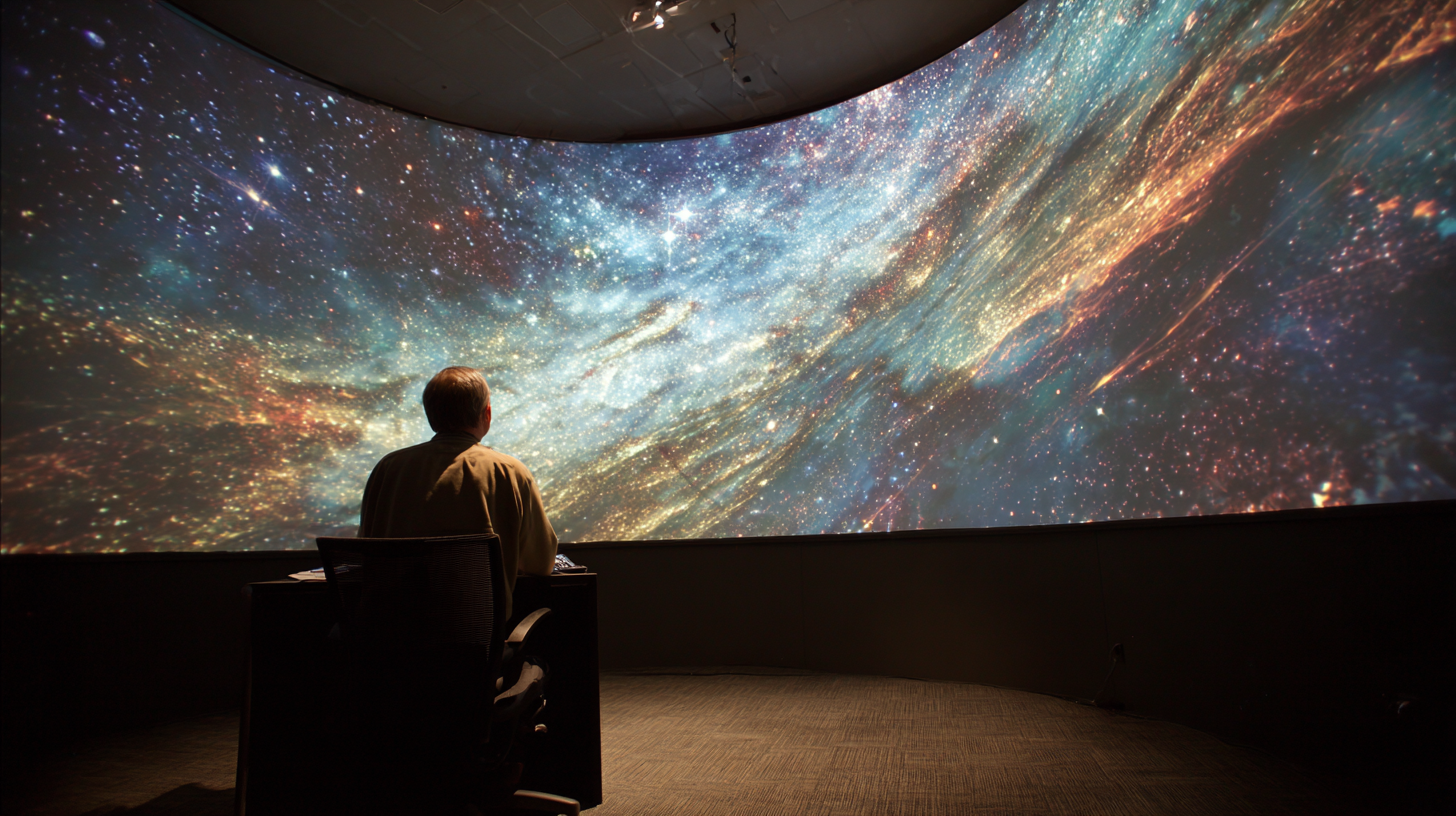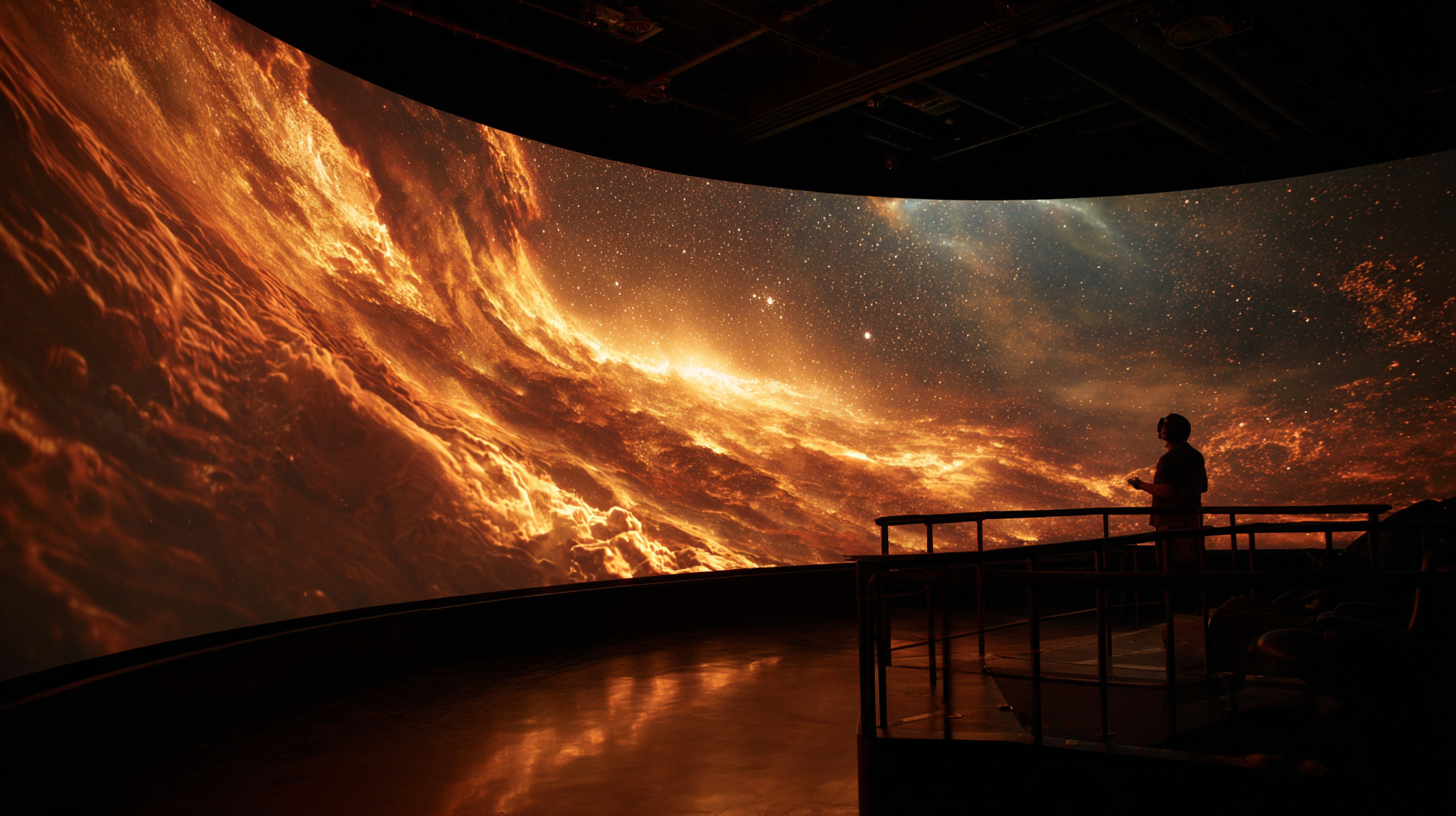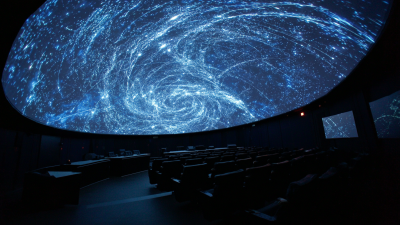In recent years, the advent of Hybrid Planetarium technologies has revolutionized the way we explore and understand the universe. As reported by the Planetarium and Museum Association, approximately 43% of planetariums in the U.S. have adopted hybrid systems, which seamlessly blend traditional projection techniques with advanced digital capabilities. This innovative approach enables captivating, immersive experiences that engage audiences in new and exciting ways, allowing for interactive exploration of celestial phenomena.
 Furthermore, a study by the International Society of Astronomical Sciences indicates that such advancements not only enhance educational outreach but also significantly increase visitor numbers, with some institutions reporting a growth rate of over 30% in attendance following the implementation of hybrid systems. As we delve deeper into the wonders of the cosmos, understanding how to effectively utilize Hybrid Planetarium technologies is crucial for educators, astronomers, and the general public alike.
Furthermore, a study by the International Society of Astronomical Sciences indicates that such advancements not only enhance educational outreach but also significantly increase visitor numbers, with some institutions reporting a growth rate of over 30% in attendance following the implementation of hybrid systems. As we delve deeper into the wonders of the cosmos, understanding how to effectively utilize Hybrid Planetarium technologies is crucial for educators, astronomers, and the general public alike.
The evolution of planetarium technology showcases an incredible journey from traditional domed theaters to the innovative hybrid models of today. Traditional planetariums primarily utilized optical projectors to simulate the night sky, captivating audiences with their simplicity and charm. These projection systems relied on mechanical devices that meticulously portrayed stars and celestial events, creating an immersive experience for viewers. However, the limitations of these systems often meant that the scope of exploration was constrained, with rigid programming and static displays.
In contrast, hybrid planetarium models have revolutionized the way we experience the cosmos. By integrating digital projection with traditional optical systems, these modern facilities offer a richer and more versatile experience. This combination allows for dynamic presentations, animations, and interactive elements that can take audiences on extraordinary journeys through space. From exploring distant galaxies to simulating astrophysical phenomena, hybrid planetariums push the boundaries of educational engagement, making the wonders of the universe more accessible than ever before. This evolution not only enhances learning opportunities but also inspires a new generation of astronomers and space enthusiasts.
Hybrid planetariums are revolutionizing educational outreach by blending the traditional dome experience with digital technology, creating immersive environments that engage audiences like never before. According to a report from the International Planetarium Society, nearly 75% of planetariums worldwide are adopting hybrid technologies to enhance their educational programs. This shift not only modernizes the learning experience but also expands accessibility, providing opportunities for diverse audiences to explore complex astronomical concepts in an engaging manner.
The integration of high-definition visuals and interactive elements allows for a richer learning environment. Recent studies indicate that students who participate in hybrid planetarium programs demonstrate up to 40% higher retention rates of astronomical knowledge compared to those who attend traditional lectures. Furthermore, hybrid planetariums can host virtual field trips and simulations that transport learners to distant planets and galaxies, effectively bridging the gap between theoretical knowledge and real-world exploration. As these innovative technologies continue to evolve, hybrid planetariums are poised to become pivotal in astronomy education, inspiring the next generation of scientists and enthusiasts.

The integration of virtual reality (VR) in modern planetariums is revolutionizing the way we explore and understand the universe. By creating immersive environments, VR technology allows visitors to experience celestial events and distant galaxies in unprecedented detail. Instead of passively observing the night sky, audiences can feel as though they are traveling through space, witnessing the birth of stars or the swirling arms of galaxies. This level of engagement transforms education into an adventure, making astronomy more accessible and captivating for people of all ages.
Moreover, hybrid planetariums that combine traditional projection systems with digital innovations are setting new standards for astronomical presentations. These facilities leverage VR alongside high-definition visuals and interactive displays, enabling a more personalized experience. For instance, attendees can explore specific celestial bodies at their own pace, interact with simulated environments, and even collaborate in real-time to investigate cosmic phenomena. This synergy of technology not only enhances the educational experience but also fosters a greater appreciation for the vastness of the universe, inspiring the next generation of astronomers and space enthusiasts.
The realm of planetariums is undergoing a significant transformation thanks to innovative hybrid technologies that enhance interactive exhibits. According to the Planetarium and Digital Dome Society, engagement metrics indicate that interactive exhibits can elevate visitor satisfaction rates by over 30%. By allowing visitors to engage directly with celestial simulations, these exhibits craft immersive experiences that not only educate but also captivate audiences of all ages. For instance, data from a recent survey reveals that 85% of visitors left with a greater understanding of astronomical phenomena after engaging with interactive displays.
Moreover, the success of these interactive components has shown a direct correlation with increased visitation numbers. The American Alliance of Museums reported that institutions incorporating advanced interactive technologies have seen an uptick in foot traffic by as much as 20%. These hybrid planetariums are not only fostering a deeper connection to the cosmos but also helping institutions stay relevant in a rapidly evolving cultural landscape. As technology continues to advance, the potential for even more engaging and educational experiences in planetariums is limitless, pushing scientists and educators to rethink how they present the mysteries of the universe.
The future of hybrid planetarium design is poised to revolutionize space exploration education by integrating advanced technology with immersive experiences. Recent developments, such as the upgrades at Zhuhai Space Center, reflect a growing trend of creating interactive platforms where visitors can engage deeply with the mysteries of the universe. These innovations aim to provide a “never-ending airshow” that enhances public interest in space science while fostering a robust tourism economy.
Similarly, the emergence of mixed reality experiences, where the virtual and real worlds blend seamlessly, highlights the shift towards more engaging educational environments. A notable example includes the newly launched innovative experience center that uses cutting-edge technology to offer guests a unique journey through space.
 This approach not only captivates audiences but also enriches their understanding of complex astronomical concepts, making learning about the universe an exciting adventure. As hybrid planetariums continue to evolve, they hold the promise of inspiring future generations to explore the cosmos in ways previously thought unimaginable.
This approach not only captivates audiences but also enriches their understanding of complex astronomical concepts, making learning about the universe an exciting adventure. As hybrid planetariums continue to evolve, they hold the promise of inspiring future generations to explore the cosmos in ways previously thought unimaginable.






